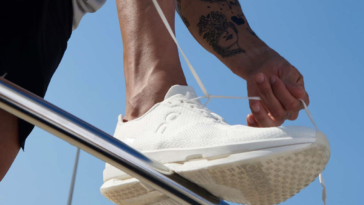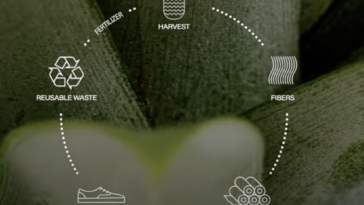This News Story is brought to you By BeIntelligent
Virtual Reality (VR) and Augmenet Reality (AR) are a trend to grow in the future: the market is still growing, but according to Valuates VR&AR market size is expected to reach USD 571.42 billion by 2025 s. The revolution that awaits VR is mainly Out-of-home, where it will allow consumers to cross the borders of one’s own home and intersect each other directly through technology.
Devices will mark progress in this field. The actual development is guided by Microsoft (HoloLens), Samsung Gear (VR), HTC (Live), Facebook (Oculus Rift) and Snapchat (Spectacles). Some are exploring the possibility to use the VR also with smartphones, using simple glasses cardboard, as those distributed by Google.
How Can VR Help Spread Sustainability Consciousness?
In 2015 the project The displaced from the New York Times, who triumphed at the Cannes Lions obtaining a Gran Prix, allowed users to immerse themselves in the lives of three children, refugees without many frills, aiming everything, with an immersive experience of VR technology, obtaining a double success, both as a news investigation and as a product innovation.
In 2016 Stella Artois BuyALadyADrink project was awarded in the Category People’s / VR at the Webby Awards, using AR to raise awareness among consumers of the importance of having access to clear water. Stella Artois and Water.org created with Unit9 a 360º split-screen VR film showing someone’s life before and after they have water access, (virtually) transporting the viewers in Honduras, where having clean water is a privilege for few and accessing clean drinking water can improve people’s lives. The film was launched at the 2016 Sundance Film Festival: “The film uses 360º filming to make the experience more real and to give the audience the ability to ‘look around’ while the film takes place, creating a more immersive approach to documentary filmmaking.” (Unit9 website)
In fact, ‘Layered’ research report, made by Mindshare UKand Neuro-Insight, demonstrated that AR experiences drive 45% higher levels of attention than other forms of media like TV or online browsing.
The progressive “normalization” of AR or VR experiences in the communication of CSR will probably soon join the introduction of users’ information, extracted from their social profiles, or from the data archived in the – more and more spread out- wearable technologies.
To succeed, the brand must have something relevant to say: an innovation, an experience, an achievement. The AR or VR success is not only linked to the unique story you are going to tell, but also to the exclusivity and accountability of the information revealed.
Unfortunately there is also a misuse of this powerful technology, used as greenwashing videos, laying on controversial facts .
Shazam To Promote Chiquita’s Sustainability
In 2018 Chiquita Brands International partnered with Shazam (Apple), to promote the company’s sustainability efforts: by scanning the code on the blue Chiquita logo, customers were able to unlock 360° videos to follow the journey of their banana from Chiquita farms in Latin America to their kitchen tables.Chiquita’s Behind The Blue Sticker VR Project
“At Chiquita we are keen to open up doors in our industry,” said Jamie Postell, Director of Sales North America for Chiquita. “We truly believe that leading the industry obliges us to invite consumers and retailers to better understand and see the actions we are taking to produce, ship and provide the best possible fruit.”
In 2010, bananas were ranked third on the list of crops in the world after wheat and coffee, making them critical for economic and global food stability. Chiquita, Dole, and DelMonte, known as “the big three,” control 60 percent of the global banana trade.
Since 1997 Chiquita has been repeatedly accused of mistreating the workers on its Central American plantations, polluting the environment, allowing cocaine to be brought to the United States on its ships, bribing foreign officials, evading foreign nations’ laws on land ownership, forcibly preventing its workers from unionizing.
The company has always denied all the allegations, but in 2007 Chiquita Brands International pleaded guilty to making payments to a designated terrorist organization and agreed to pay $25 million fine.
In 2020, Chiquita’s is still struggling with the adverse situation of the company’s dealings with terrorists.
On April 2020 the nonprofit EarthRights International organisation joined other class actions filing a lawsuit against Chiquita Brands International on behalf of more than 200 Colombians, who were supposedly tortured or had family members killed by paramilitaries.
In February 2020 Chiquita launched its new Sustainability Report, underlining the company’s long-term engagement to ensure sustainability. Chiquita’s report focuses on the company’s main vehicle for sustainability, its ‘Behind the Blue Sticker’ approach, which, embedded in all operations, also embraces partnerships with key organizations, like The Rainforest Alliance, whose certification of Chiquita’s farms started over 20 years ago, in 1994.
On the 50° anniversary of Earth Day the director of Water and Sanitation Health sued Rainforest Alliance as the “Rainforest Alliance certified” sticker allegedly conveys a message of environmental and social responsibility, while – in the organisation opinion- that message runs counter to the on-the-ground reality at the certified farms.
It’s hard to see the truth behind all these litigations, certainly the reality behind a sticker, no matter if augmented or virtual, should stay true.
National Geographic And Web AR To Promote Nespresso Sustainability
Nespresso partnered with photographer Rena Effendi from the National Geographic, who filmed and photographed farmers and their communities over several months. Entitled ‘Beyond the Bean’, this content was then brought to life in exhibitions across Europe and Australia, utilizing Zappar WebAR to let visitors access ‘real’ experience of what Nespresso has been doing with local farmers. Launched in 2003, the Nespresso AAA Sustainable Quality™ Program is a coffee sourcing program, designed and implemented specifically for Nespresso, in collaboration with the Rainforest Alliance
In December of 2019, Reuters reported that armed police and labor inspectors raided two large coffee plantations in Brazil to free people working as slaves to grow coofee still certified slavery-free and “sold at a premium to major brands like Starbucks and Nespresso.”
READ ALSO Espresso expressing CSR
Child slavery has also been found at six Guatemalan farms that believed to supply Nespresso with coffee. Channel 4 Dispatches filmed children working eight hours a day, six days a week, making poverty wages. As soon as the revelations in Guatemala were made, Nespresso’s star George Clooney stated: “Clearly this board and this company still have work to do. And that work will be done.”
Again, while companies are dealing with the side-effect effect of their operations on the public opinion, everything should be done to ensure advertising or content partnership are not conceived as merely greenwashing.
Obviously creativity+technology is a powerful tool for sustainability storytelling. But “transparency” remains an essential watchword .
The AR and VR services carry with them an important value: they communicate the ‘self confidence’ of a brand that has no need to hide and that does not fear a direct contact with its audience. Almost an obligation for contemporary marketing – at least for CSR marketing – asked to know how to combine ethical business + branding for the benefit of its audience, the Planet and People on it.
Photo credits: Maurizio Cattelan’s Comedian, @Perrotin Art Basel Miami Beach. Photo by Sarah Cascone.








